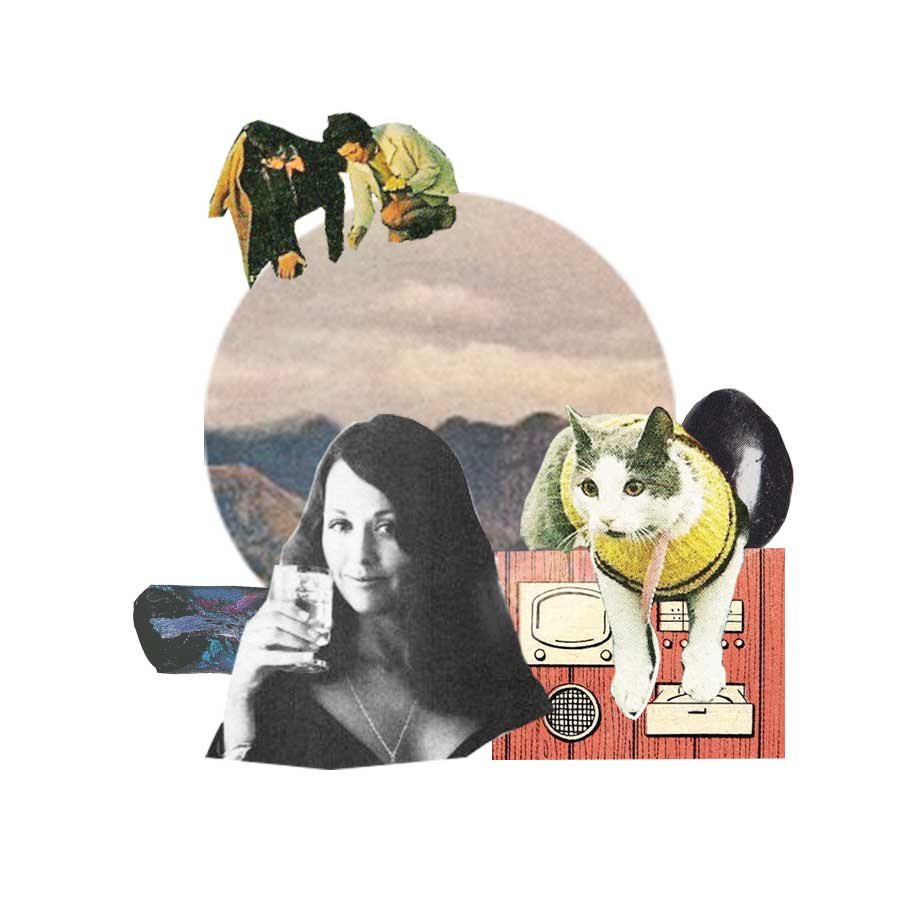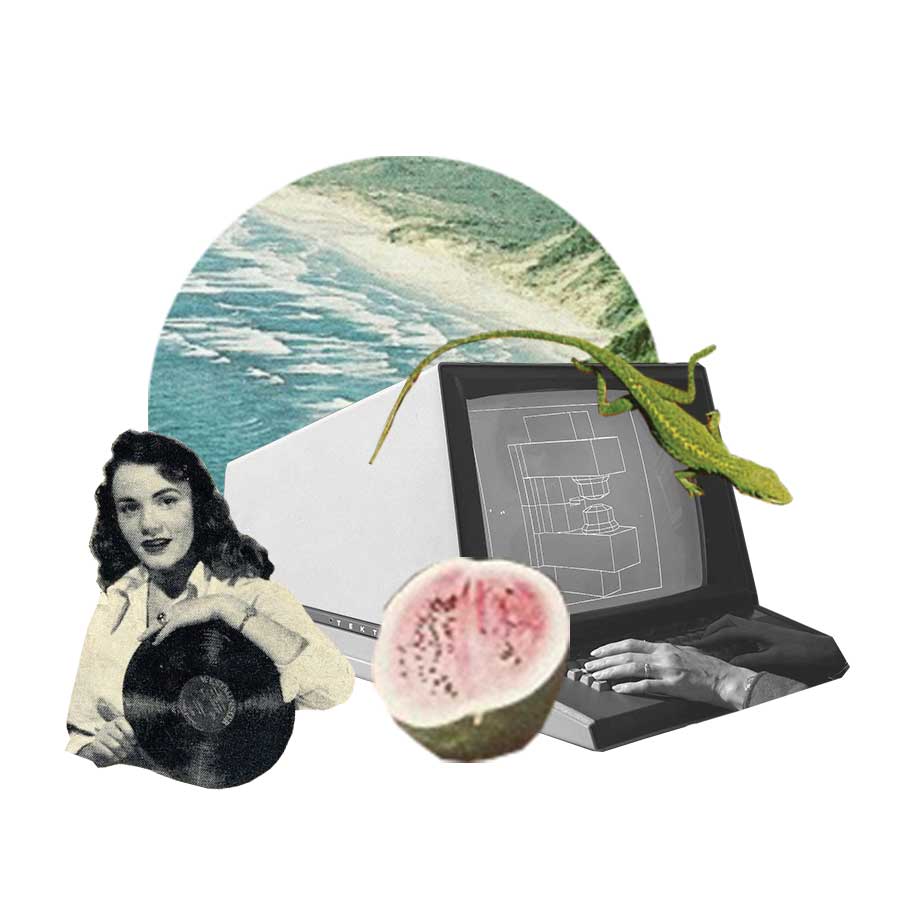
by Shaina Joy Machlus
Photo illustrations by Liz Pavlovic
Like so many projects of great worth, the Somos Venus podcast commenced with alcohol and a group of women who adore each other. Someone was telling a particularly obscene story, which resulted in another mentioning how incredible it would be to share our laughter with other people. Ignoring the fact that we had no previous podcasting experience, we slowly but surely formed the Somos Venus Podcast. The group of women behind it are Eva Carasol, Andrea Valverde, Laura Fernández Giménez, Montse Casas, Laura Pons Negre, Olga Permanyer Martínez, and me, Shaina Machlus. Twenty-four episodes later, and we proudly describe ourselves as a powerful lil’ Spanish-language podcast about navigating the world as intersectional feminists and other things that terrify rich, old, straight, white men.
Having started from zero, we learned quite a bit along the way. I’m here to share tips and tricks for anyone who might find themselves similarly motivated to take a dive into the wide and wonderful pool of podcasts.
 1. Have a topic you feel passionate about and are interested in continually exploring.
1. Have a topic you feel passionate about and are interested in continually exploring.
Make a mind map that starts with a giant bubble as the main topic, two to five smaller bubbles that expand and support the main idea and then lots of branches coming out about possible ways to explore these sub-bubbles. The idea is to have a central focus but with plenty of room to expand. If your mind map looks a bit empty, perhaps it’s wise to reconsider or broaden the topic.
2. Start thinking about format and flow.
Listening to many other podcasts and writing down hypes and gripes can be helpful. Does this podcast have sections? Guest stars? Multiple hosts? What is the best order of information and/or sections? How long should the podcast be? What’s the format? Do you want your podcast to be scripted or more conversational?
3. Make a layout of the first 10 episodes.
Excel is key here. If you’re a multiple-person podcast, like us, create a document so each person knows their sections. We rotate sections every podcast, so organization is very important. Knowing topics well in advance is really helpful and actually allows for more flexibility when there needs to be a change.
4. Start writing a loose script for the first podcast.
Reading directly from a script on air can sound mechanical, so make a detailed outline instead. Practice the podcast, a lot. Record yourself on your phone, listen, and reflect on how it sounds. It’s also really good to start getting used to the sound of your own voice, which is really weird at first. Take notes!
5. If you’re making a podcast with multiple people, talk about a plan for not interrupting each other. It’s harder than you might think.
We use a hand raising system, so we can know who is next to speak. We have also found it very helpful to appoint a moderator for each podcast. Their responsibility is to designate whose turn it is to speak.
 6. Decide which server to use for hosting your podcast.
6. Decide which server to use for hosting your podcast.
Unless you’re going to go through a third party site like PodBean or PodOmatic (which are easy ways to start podcasts for those who don’t want total control over their content), you need a place that will store all of your podcasts. Somos Venus uses iVoox, a popular, free service in Europe. Other popular options include Archive.org and SoundCloud. Lots of podcasts post theirs on several different sites. Once you have a hosting site, you will have something called an RSS feed, which is important. If you can’t find your RSS feed, do a quick google search for “how to find RSS feed on hosting site.” Your RSS feed is an active link. It is how people listen to your podcast and how you can upload your podcast to sites like iTunes.
7. Start considering the equipment needed for recording.
Maybe you have access to a recording studio, but probably not. The only essential things are a computer or phone and a microphone. USB mics plug right into your computer and audio quality is good. No particular software is needed; just make sure any audio files are saved as mp3s. From there, you could mess around with audio editing software, but you don’t have to. Test microphones and recording equipment before actually recording the show.
8. Design a logo and the general look of the podcast.
In our very visually oriented culture, the look of a podcast can be the determining factor of its success. That being said, investing in a professional designer to create the look can be worth the money. There is also canva.com, a very useful design website with thousands of templates and design tools for people who know nothing about design. And coolors.co, which is a color palette generator.
9. How are you going to make sure people hear your podcast?
Come up with a mini-marketing plan. Create a Facebook, Instagram, Twitter, and webpage with the same name and look so people can find you easily. Think about the specific communities of people you want to access, then do small, paid social media campaigns directed at your potential audience. Collaborations are also great ways to get people interested. Invite guests on your show that people want to hear! Once you have a few episodes of which you’re proud, send out an eblast to friends and family to let them know what you’re doing. Send a press release to magazines, blogs, or trendsetter types who might be interested. Also, support other organizations and podcasts that you think are inspirational.
10. Go for it!
I personally recommend doing everything in one shot. Mistakes make a podcast sound more human and more interesting. So, if you mess up, just keep going!
11. Upload your podcast and remain consistent.
For your audience, knowing when to expect the next podcast is extremely important. Whether it’s once every two months or once every two days, stick to deadlines. In the case of multi-person podcasts, it is kind of like being in a band in that the level of enthusiasm and commitment waxes and wanes. Make sure to have a system in place to keep each other in check.
12. Keep creating!
It takes time to build a following, so don’t get discouraged. Never shy away from asking for feedback from friends and family. If something isn’t working, don’t be afraid to change the format or style. Most podcasts have evolved over time as people learn what their listeners want to hear.
This piece was featured in our DIY Issue. Purchase your copy here.

